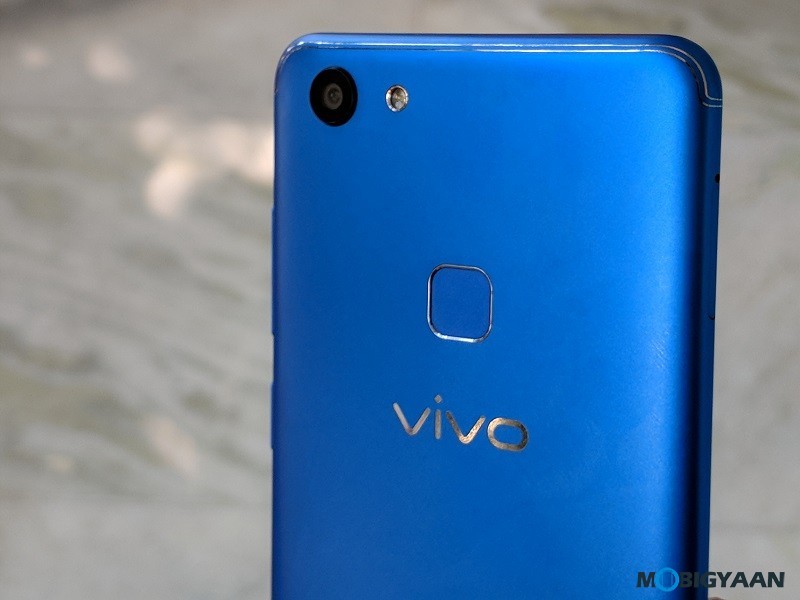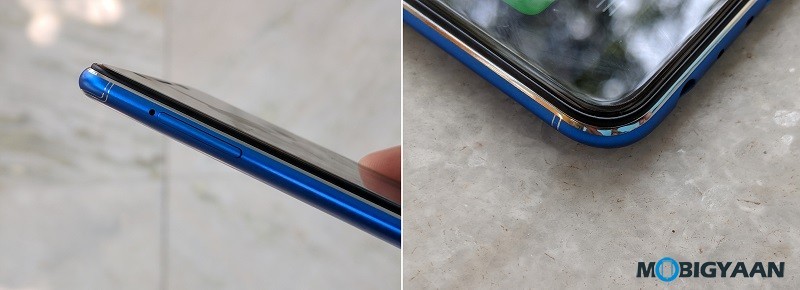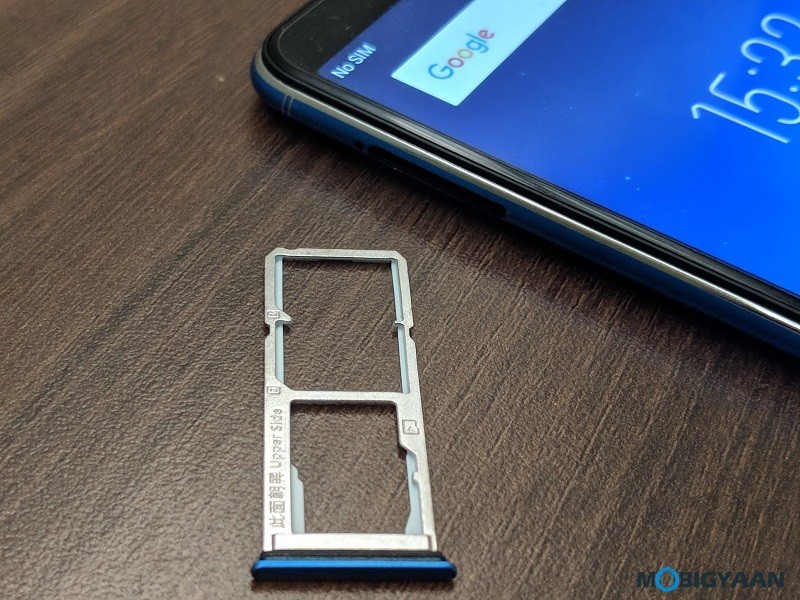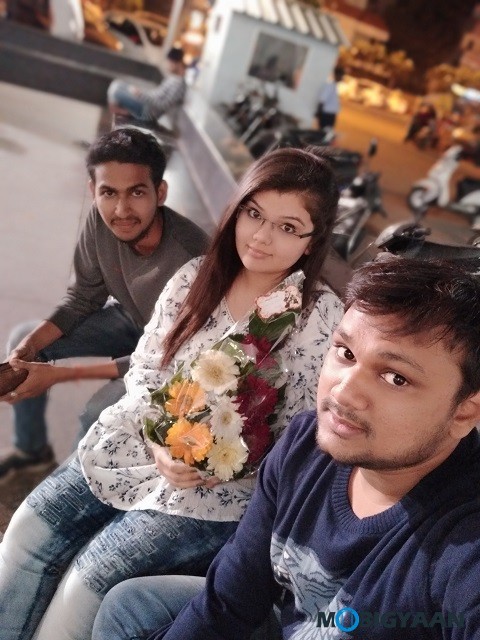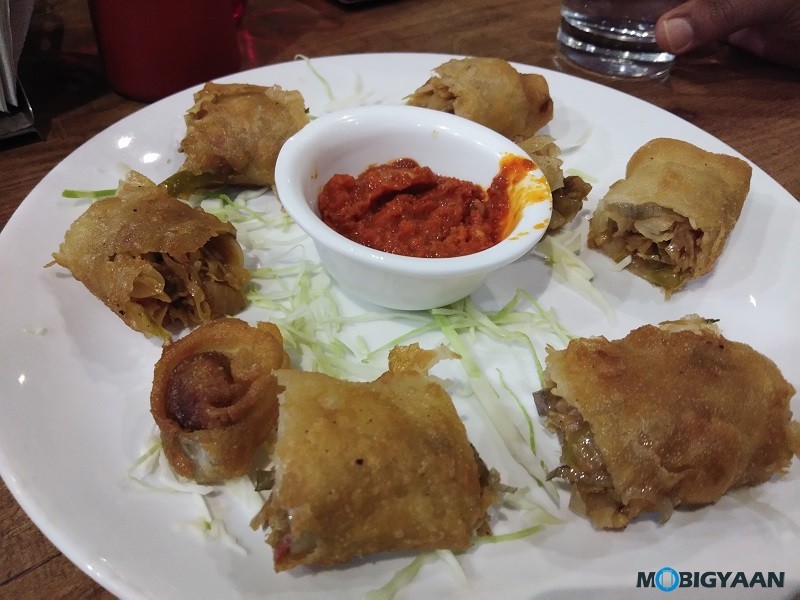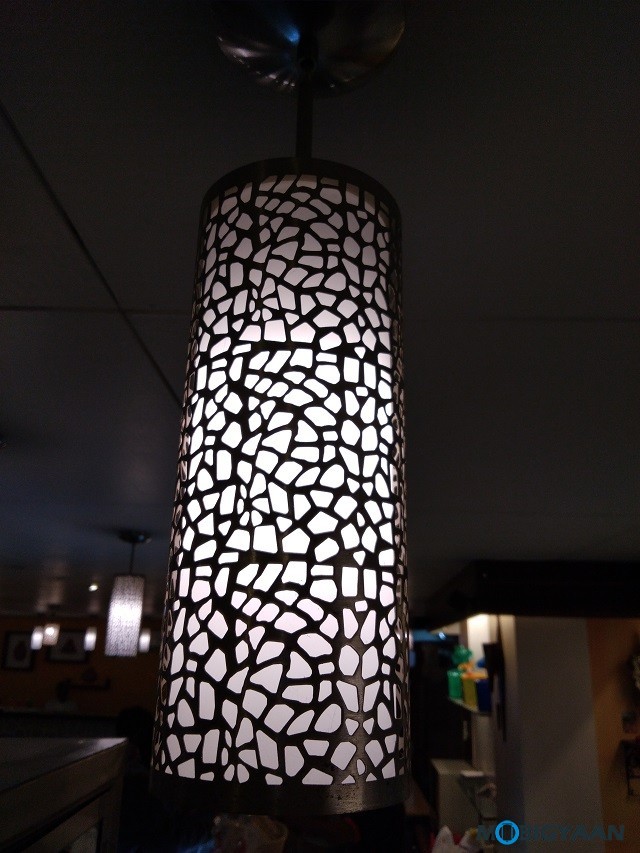After the Vivo V7+, the company launched a smaller sized Vivo V7 phone that performs just like the V7+. The main difference is the size and comes with a lesser price. Vivo still upholds the selfie phone tagline and selfie lovers will love this phone, especially the new Energetic Blue color. Here’s our Vivo V7 review.
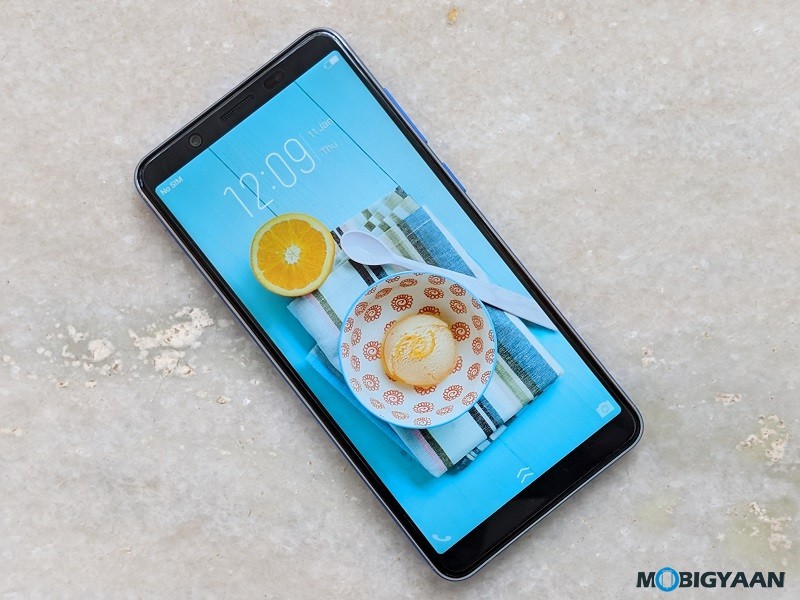
What’s in the Box
- Vivo V7 with built-in battery
- Micro USB Cable
- Charger (5V, 2A)
- Earphones
- Silicon Clear Case
- SIM Tray Ejector
- User Guides and Warranty Card
Vivo V7 Specifications
- Display: 5.7-inch FullView IPS display, HD+ resolution (1440 x 720 pixels), 18:9 aspect ratio, 2.5D curved Corning Gorilla Glass protection
- Software: Funtouch OS 3.2 based on Android 7.1.1 Nougat
- CPU: Up to 1.8 GHz octa-core Cortex-A53 processor, Qualcomm Snapdragon 450, 14nm LPP
- RAM: 4 GB LPDDR3 RAM
- GPU: Adreno 506, OpenGL 3.1+
- Rear Camera: 16 MP with PDAF, f/2.0 aperture and LED flash
- Front Camera: 24 MP with f/2.0 aperture, Face Beauty 7.0 and LED flash
- Internal Storage: 32 GB
- External Storage: Expandable up to 256 GB via microSD card
- SIM: Dual Nano SIM
- Connectivity: 4G LTE, GPS, Bluetooth 4.2, Wi-Fi, FM Radio, 3.5 mm headphone jack, micro USB 2.0, USB OTG
- Other: Fingerprint Scanner, Face Access unlock, Hi-Fi Music
- Colors: Matte Black, Gold, Energetic Blue
- Battery: 3,000 mAh
Design, Build & Ergonomics
Just like its elder sibling, the first impression of the Vivo V7 hints a polished aluminum back, but the entire body is made of plastic. The design outlines its bezel-less type and compact form factor. The rest of the design isn’t as appealing as metallic phones. Nevertheless, the design is ergonomic, it’s slim and light in weight. The Vivo V7 is now in available in Energetic Blue color.
The main highlight remains to be the same as V7+, the Vivo V7 offers 24 MP camera for selfie needs. Another big highlight is the FullView display with 18:9 aspect ratio. The cameras are capable of taking portraits with bokeh effects. The front camera also works for Face Unlock.
The front home key and other navigation buttons are removed, the fingerprint scanner is moved to the back. Since there are no external keys, the screen is stretched to the bottom bezel. The navigation is made through the provided on-screen buttons.
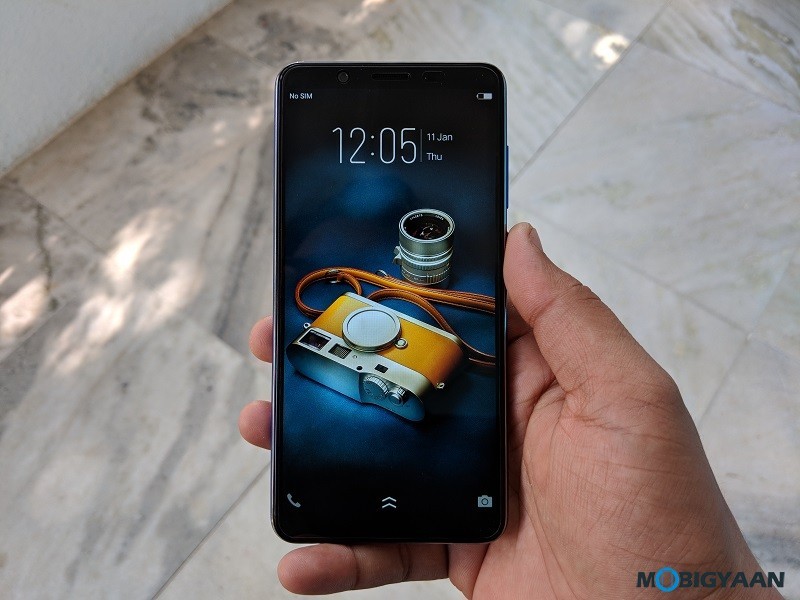
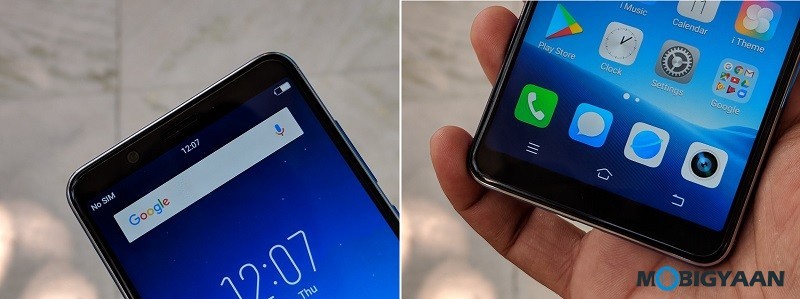
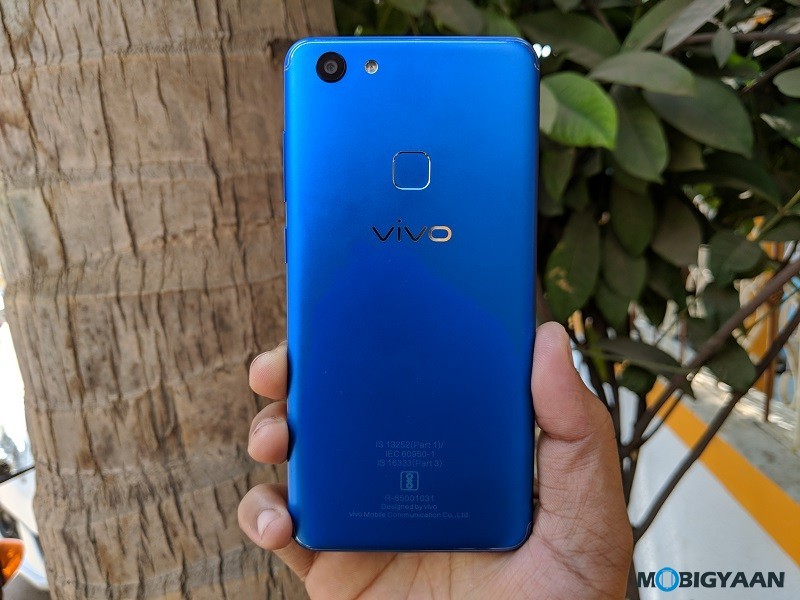
Vivo still uses the same sides pattern, no Type-C port, just the usual micro USB. The loudspeakers are loud and clear, it supports 3.5 mm headphones port. On the top and the bottom, it holds two microphones respectively. The SIM tray offers a separate microSD card slot, so there’s no hindrance to the dual SIM functionality.
Display
Vivo V7 sports a 5.7-inch FullView display with a resolution of HD+ i.e. 1440 x 720 pixels. The current phones like Honor 9 Lite with FullHD+ display have an edge over Vivo V7. Although the display is bright and good quality, you won’t be able to watch 1080p or higher quality videos on apps like YouTube due to its HD screen limitation.
Not much is provided in the display settings, the Full-screen feature will scale the apps to the new 18:9 aspect ratio. However, not all apps may support the new aspect ratio, hence, you will encounter black bars on the top and the bottom.
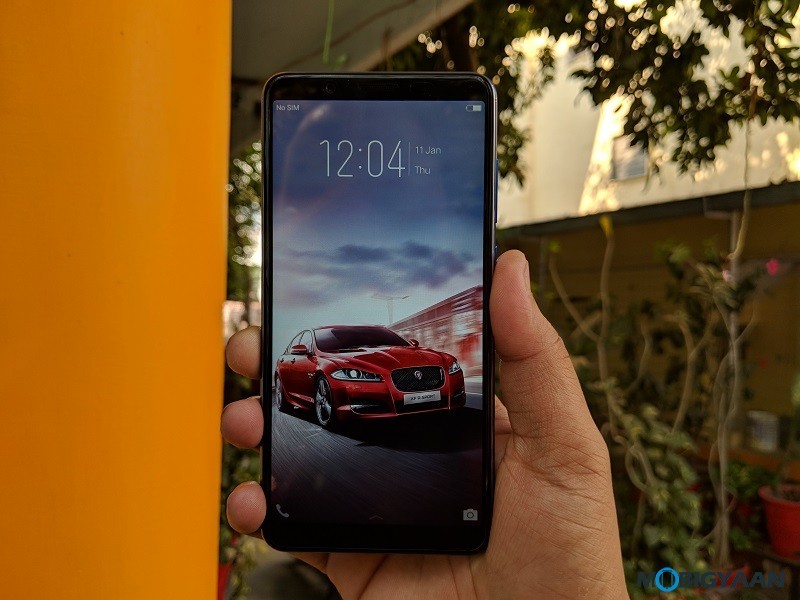
Software & User Interface
The software on the Vivo V7 is the same we saw on the Vivo V7+, there’s nothing new here. The Vivo V7 runs on the Android 7.1.2 Nougat with FunTouch OS 3.2 and security patch of 1st December 2017. The FunTouch OS comes with features liek dual apps, face unlock, split screen, Palm capture, swipting the bottom brings quick shortcuts. To know more about the software, head to the Vivo V7+ review.
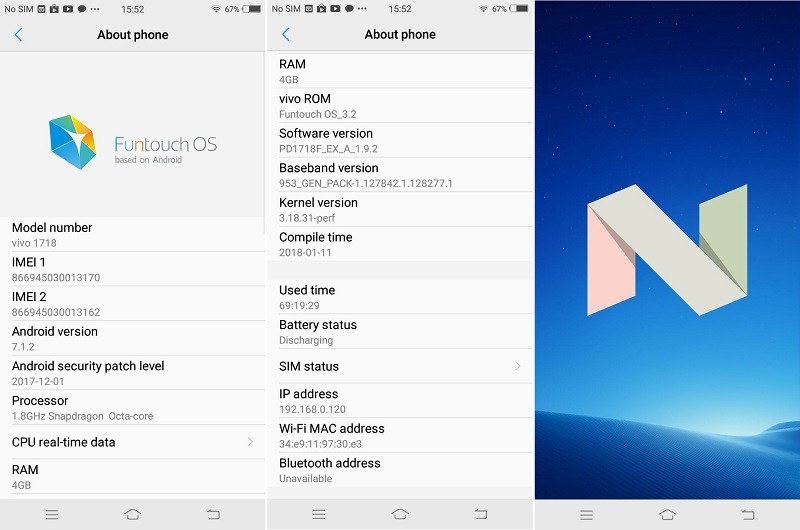
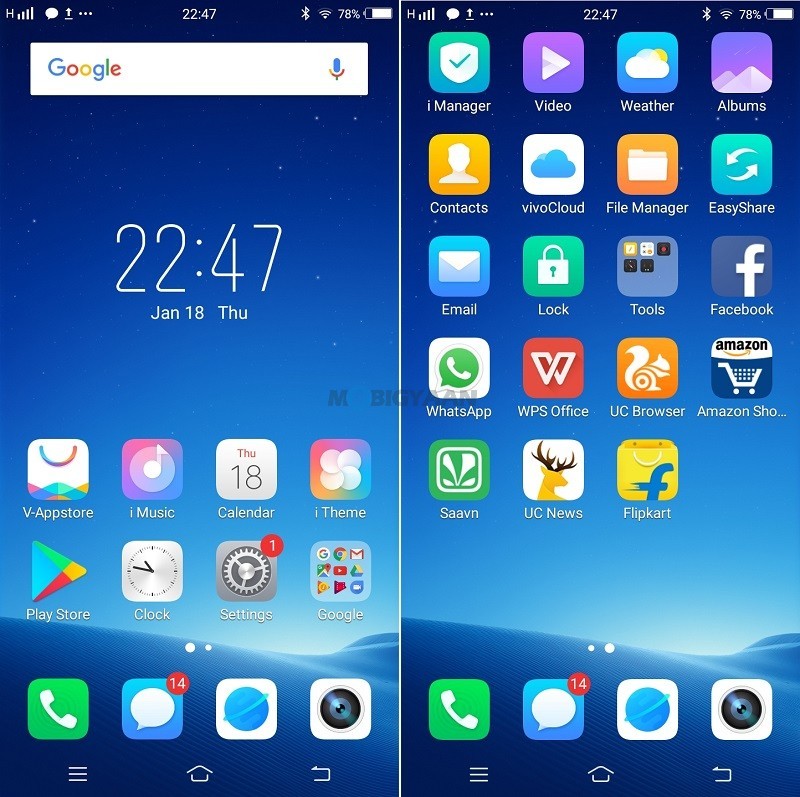
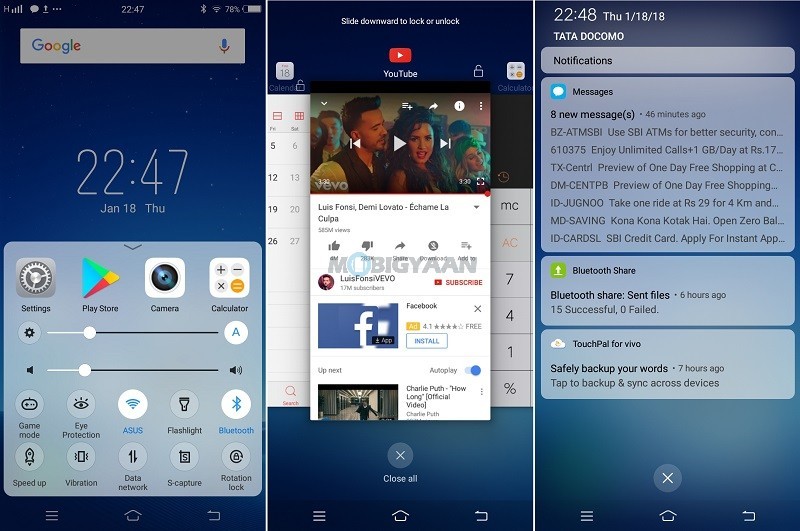
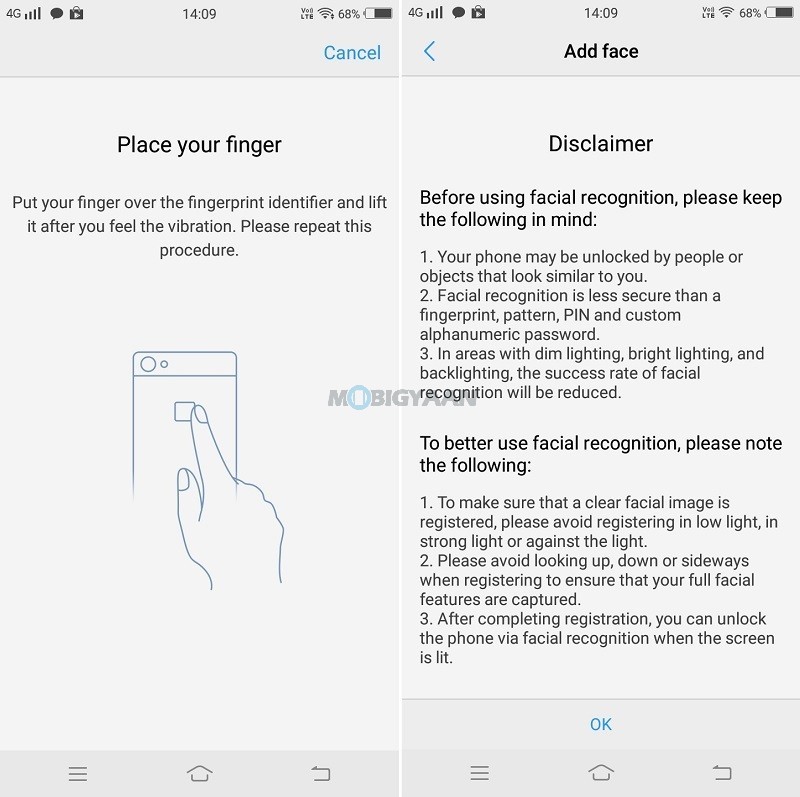
Hardware, Performance & Gaming
Vivo V7 is powered by a Qualcomm Snapdragon 450 octa-core chip with 4 GB LPDDR3 RAM and 32 GB eMMC storage. While it’s not a bad chip in any way, the performance is slightly below the popular Snapdragon 625 SoC. More like if you are using it as a daily driver than using it for heavy multitasking and intense gaming.
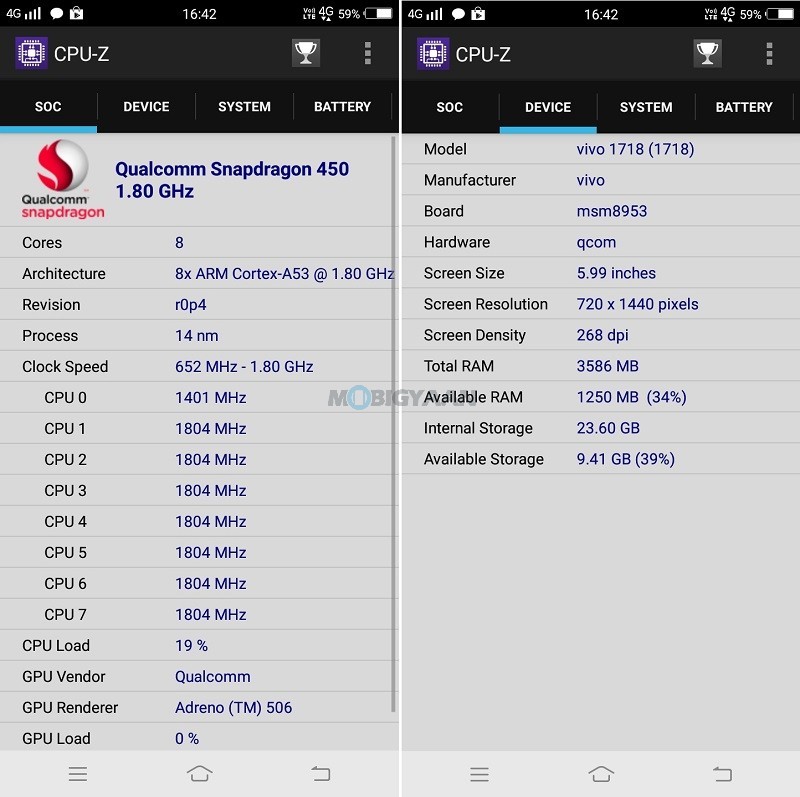
The hardware is not meant for performance users, the benchmarks suggest that the overall CPU power is slightly below or equivalent to the Snapdragon 625. AnTuTu scores 55,496 points, Geekbench scores 763 points (single-core CPU), 3,894 points (multi-core CPU), and 2,987 points (GPU).
AnTuTu Benchmark
- 56,386 points
Geekbench 4
- 763 points (single-core CPU)
- 3,894 points (multi-core CPU)
- 3,101 (GPU)
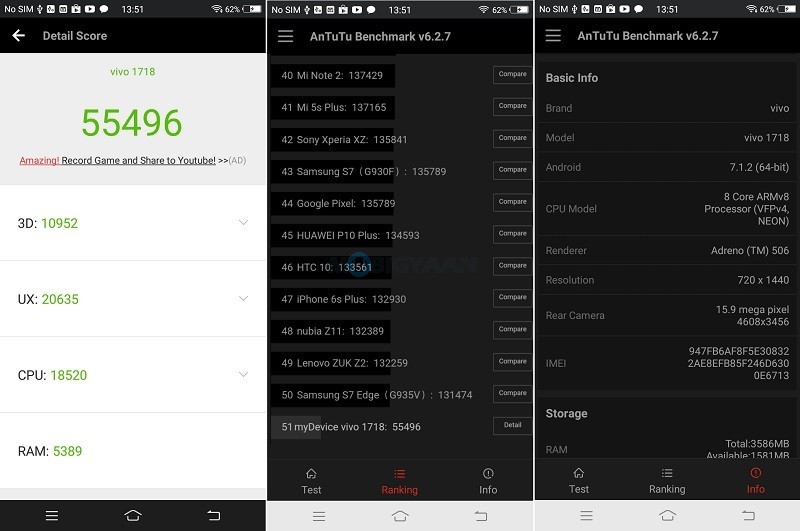
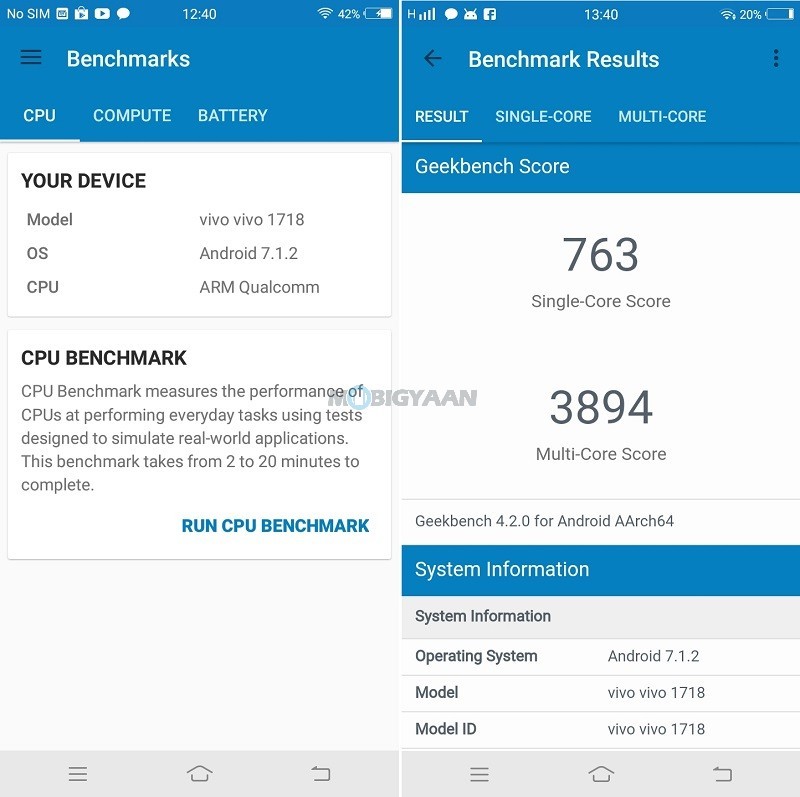
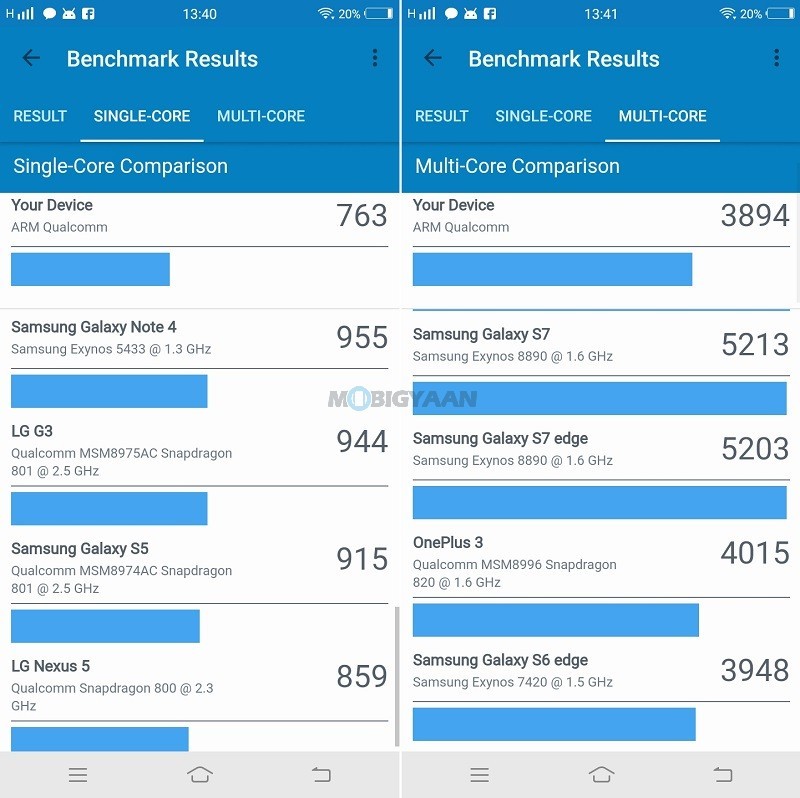
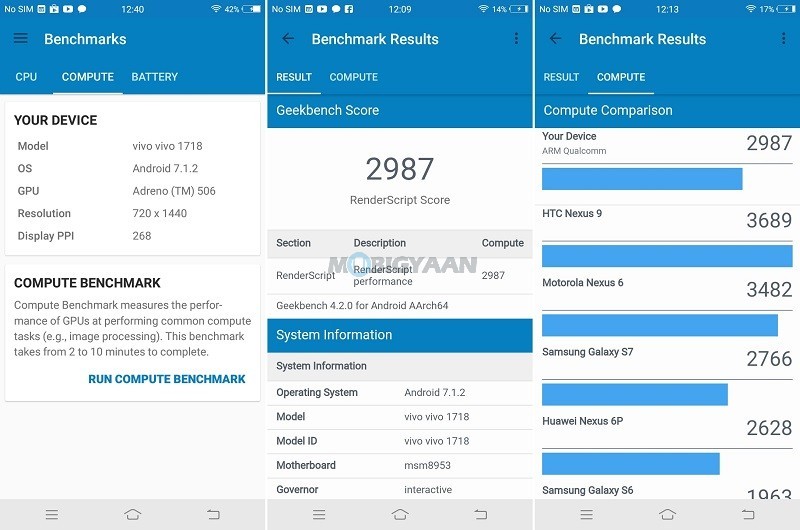
Since the hardware on the Vivo V7 is same as Vivo V7+, the performance would be identical. The Adreno 506 GPU on Vivo V7 is good, but unlike Adreno 510 which is more efficient for gaming. The GPU can run a few moderate games without any issues.
Games Tested on Vivo V7
- Snowboard Party: World Tour
- Metal Squad
- Into The Dead
Storage & RAM Performance
Vivo V7 comes with 32 GB storage on-board with a standalone microSD card expansion. The SIM tray holds a separate microSD slot that expands the storage without losing the dual SIM functionality. There are no other storage variants available, you have to opt for a microSD for more storage.
As compared to the phones in the price range, the performance is fair. The benchmarks indicate that the read-write speeds are slightly higher in the competition.
A1 SD Bench
- 261.35 MB/s (Read)
- 86.44 MB/s (Write)
- 4,841 MB/s (RAM Copy)
AndroBench
- 301.98 MB/s (Sequential Read)
- 102.86 MB/s (Sequential Write)
- 75.30 MB/s (Random Read)
- 17.08 MB/s (Random Write)
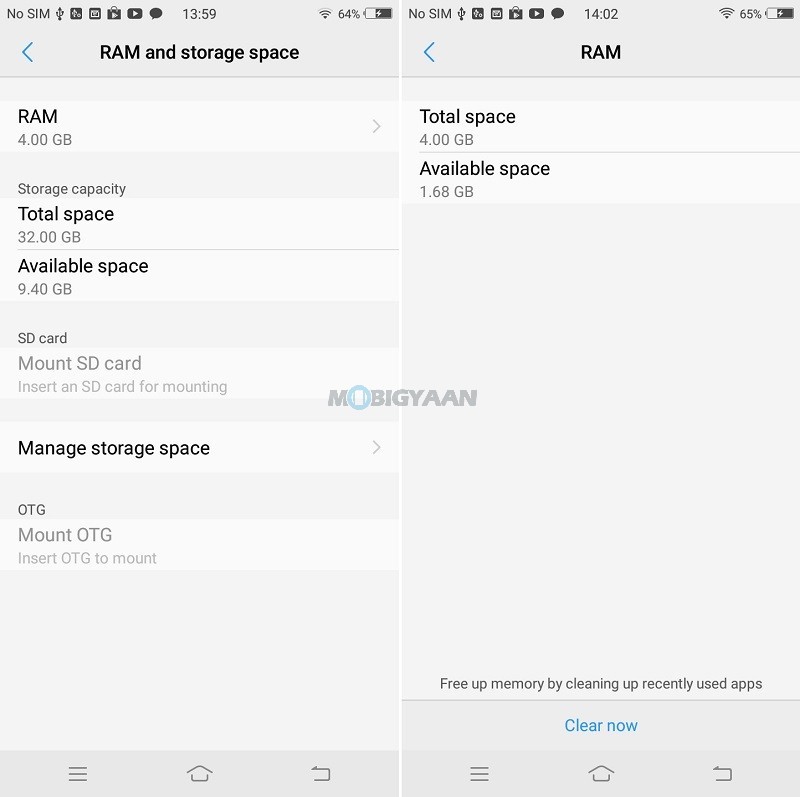
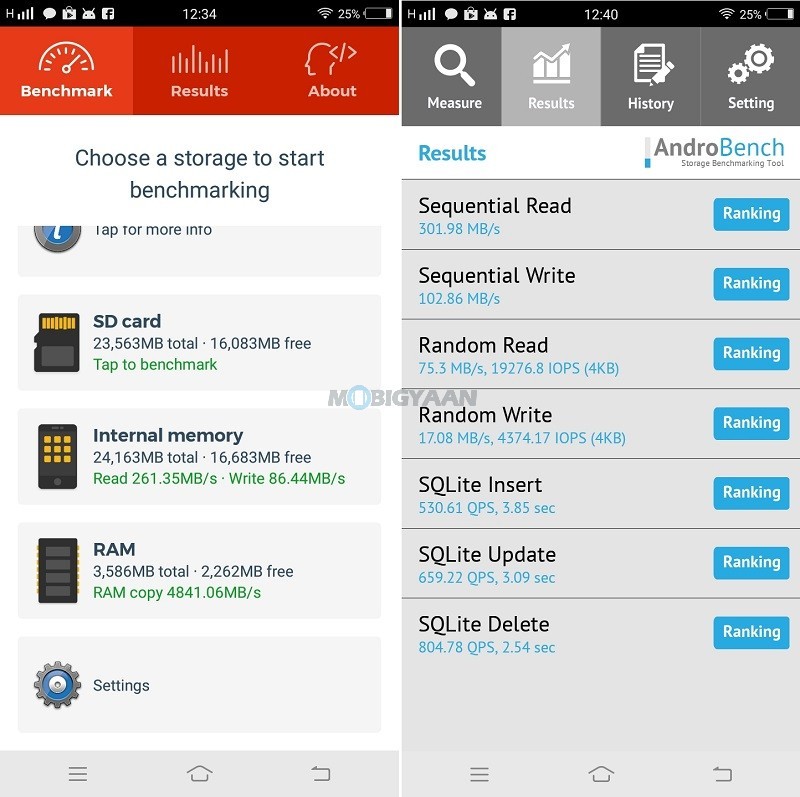
Cameras
Vivo V7 is a selfie-centric smartphone with a 24 MP front camera, the same camera we saw on the Vivo V7+ and it’s the highest megapixels ever happen to be on a smartphone. The predecessor Vivo V5 came with 20 MP camera, the Vivo V7 equips a 24 MP front camera which is unlike the selfie flagship Vivo V5 Plus that offers dual front cameras and tends to take perfect selfies.
We did capture some shots on the V7 even though the camera quality appears to same as we took on V7+. The moonlight flash helps the selfies in the light scenarios. Features like Live Photos, Palm capture, Voice capture, Ultra HD, Professional mode, Slow Motion are available on the Vivo V7.
Both the cameras, the 24 MP on the front and the 16 MP camera on the rear side has the ability to capture the shots with bokeh effects. There’s no control over the bokeh or blur amount, Honor smartphones are good at that, they have a feature that allows the user to adjust the blur amount. Vivo V5 Plus with dual front cameras also has it.
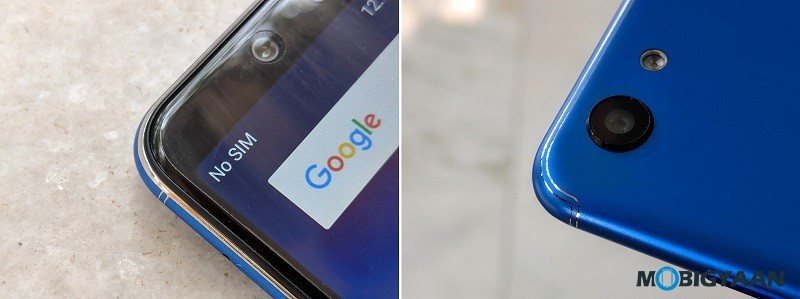
Vivo V7 Camera Specifications
- Camera: 16 MP
- Optical Image Stabilization (OIS): N/A
- Rear Flash: Single LED flash
- Features: Normal, Face Beauty, Group selfie, Portrait mode, LIVEOn, Watermark, Touch Capture, Voice Capture, Palm Capture, Timer, Mirrored Selfie, Geo-tagging, Tap to Focus, HDR, Color Filters, Burst Shot
- Video Recording: 1080p video @30fps
- Front Camera: 24 MP, f/2.0
- Image Sensor: OmniVision OV16880
- Video Recording: 1080p/720p/480p videos @30fps
- Front Flash: Moonlight Glow LED Flash
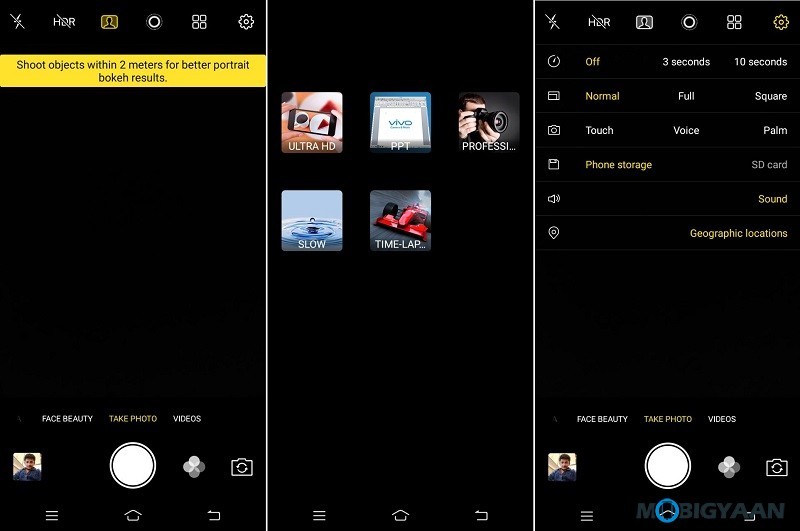
Vivo V7 Camera Samples
Battery Runtime & Charging
In addition to the specs, the battery capacity is 3,000 mAh, Vivo has slightly degraded the battery (3,225 mAh on Vivo V7+). We haven’t seen any big numbers so far in the battery department, others in the segment are ahead in terms of the battery capacity.
The 3,000 mAh battery runs a day and a half on average use. Using it as a daily driver (with 4G data), the Vivo V7 is capable of lasting a full day without charging. Our usage includes voice calling, video playback, 4G data, Wi-Fi Hotspot, YouTube, Camera, Gallery, Facebook, messaging apps, and gaming for some time.
The performance of the Vivo V7 battery is fair given the size of the battery, yet certainly not the best in the segment since there are phones with longer battery runtimes and higher capacity. No fast charging option is available.
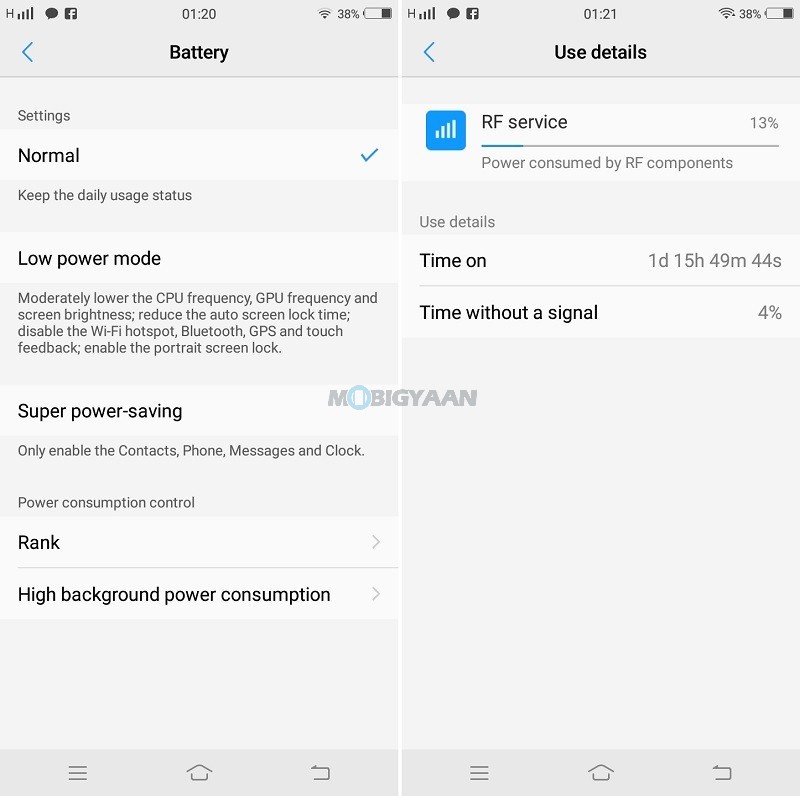
Vivo V7 Battery Test Results
[table id=138 responsive=flip /]
Verdict
Vivo has pretty much captured the selfie market, Vivo V7 with a little less price than the Vivo V7+. For selfies, it’s definitely a yes, plus the design is good, compact and lightweight. Vivo V7 is on the top in the selfie phones. You may look for other phones if selfies isn’t your main requirement.
Rivals
- Honor 9i – ₹17,999
- Honor 9 Lite – 10,999
Strength
- Light Weight & Compact
- 18:9 FullView Display
- Great Selfies
- Loud & Clear Audio
- Fast Face Unlock & Fingerprint Scanner
- Standalone MicroSD Support
Weakness
- No 4K Video Recording

